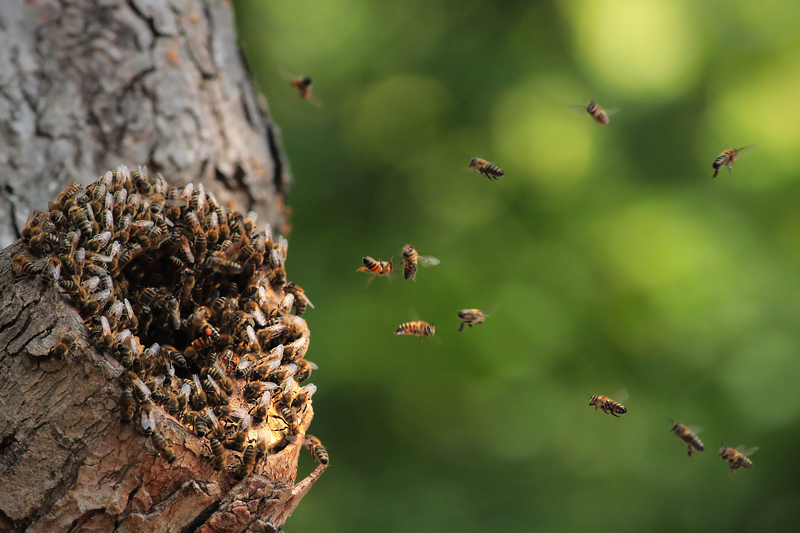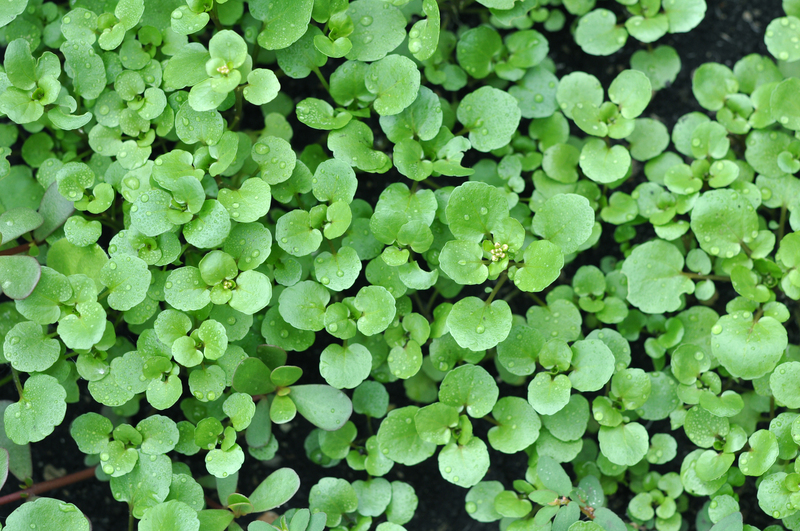Ultimate List of Tools Every Gardener Needs
Posted on 14/08/2025
Ultimate List of Tools Every Gardener Needs: Build Your Dream Gardening Toolkit
Whether you are an enthusiastic beginner planning your first flower bed or a seasoned pro cultivating a productive vegetable patch, having the right gardening tools is essential. The proper equipment not only makes gardening more enjoyable but also improves efficiency while reducing the risk of injury. In this comprehensive guide, we present the ultimate list of tools every gardener needs. Learn about key hand tools, advanced equipment, and the best tool maintenance tips to keep your garden thriving all year long.
Why Every Gardener Should Invest in Quality Tools
From digging soil to pruning delicate stems, each gardening activity requires a unique set of tools designed for the task. Using high-quality gardening tools ensures precision, durability, and comfort, making your time in the garden both productive and enjoyable. Poorly made or inappropriate tools can increase your workload, cause frustration, and even damage your beloved plants. Make the most of your gardening journey by equipping yourself with the best gardening tools for every job, big or small.

Essential Hand Tools Every Gardener Needs
No gardening toolkit is complete without these must-have hand tools. They're your go-to implements for daily gardening work, providing the core functions to keep your landscape healthy and vibrant.
1. Hand Trowel
- Description: A small, versatile tool with a pointed scoop-shaped blade, ideal for digging, planting, transplanting, and potting plants.
- Why You Need It: The hand trowel is perfect for container gardening and flower beds, making it a staple in every gardener's kit.
- Pro Tip: Look for a hand trowel with a comfortable, ergonomic grip and a strong stainless-steel blade.
2. Gardening Fork (Hand Fork)
- Description: Also known as a cultivator, this tool features three or four sturdy prongs, perfect for breaking up soil, removing weeds, and aerating your planting areas.
- Why You Need It: Helps to prepare your garden beds and encourage healthy root growth by improving soil structure.
- Pro Tip: Choose a fork with sharp points to tackle compacted clay soils with ease.
3. Pruning Shears (Secateurs)
- Description: Sharp, handheld clippers used for trimming and shaping plants, cutting dead stems, and harvesting herbs or flowers.
- Why You Need It: Essential for keeping plants healthy, encouraging blooms, and managing the size of shrubs and bushes.
- Pro Tip: Invest in bypass secateurs for clean cuts on live stems and anvil pruners for deadwood.
4. Garden Hoe
- Description: A long-handled tool featuring a flat blade, perfect for weeding, shaping soil, and creating furrows for sowing seeds.
- Why You Need It: Indispensable for vegetable gardening and large flower beds, making soil preparation fast and efficient.
- Pro Tip: Select a hoe style that matches your garden's needs: stirrup hoes for weeding, traditional hoes for digging.
5. Watering Can or Hose
- Description: Provides controlled and precise watering for delicate seedlings, potted plants, and garden beds.
- Why You Need It: Ensures your plants receive the right amount of hydration, especially during dry spells.
- Pro Tip: Use cans with detachable rose attachments for gentle watering.
6. Garden Gloves
- Description: Protective gloves shield your hands from thorns, splinters, and soil-borne pathogens.
- Why You Need It: Prevents cuts, blisters, and irritation for a more comfortable gardening experience.
- Pro Tip: Choose gloves made from breathable material for all-day comfort.
Specialized Gardening Tools for Every Scenario
As your garden ambitions grow, so does the need for specialized garden tools. These implements help tackle larger projects, unique plants, and advanced landscaping features.
7. Loppers
- Description: Long-handled pruners designed for cutting thick branches on shrubs and trees.
- Why You Need It: Perfect for removing woody stems that are too large for regular secateurs, helping keep your garden tidy and healthy.
- Pro Tip: Telescopic handles provide greater leverage and reach.
8. Wheelbarrow or Garden Cart
- Description: Essential for transporting soil, compost, mulch, tools, and heavy plants around your garden with minimal effort.
- Why You Need It: Saves time and energy, especially in larger gardens or during landscaping projects.
- Pro Tip: Opt for puncture-proof tires and lightweight designs for easier maneuverability.
9. Soil Knife (Hori Hori)
- Description: A versatile, Japanese multi-purpose gardening knife with a sharp, serrated blade for digging, weeding, and even harvesting.
- Why You Need It: Combines several tool functions so you can plant, cut roots, and divide perennials with ease.
- Pro Tip: A stainless steel blade resists rust and maintains a sharp edge longer.
10. Rake
- Description: Rakes come in various designs, from garden rakes for soil leveling to leaf rakes for clearing debris.
- Why You Need It: Important for evening out soil, removing stones, autumn leaf cleanup, and spreading mulch.
- Pro Tip: Lightweight, adjustable rakes are ideal for smaller spaces.
11. Garden Spade
- Description: A flat-bladed digging tool essential for edging, transplanting, and turning soil.
- Why You Need It: Provides clean, sharp cuts for sod, roots, and bed preparation tasks.
- Pro Tip: Ergonomic handles and footrests make digging easier on your body.
12. Plant Supports and Ties
- Description: Includes stakes, cages, trellises, and soft ties used to support climbing plants or straighten young saplings.
- Why You Need It: Prevents flopping, wind damage, and encourages upward growth for your flowers and vegetables alike.
- Pro Tip: Soft, flexible ties are kinder to plant stems than wires or twist-ties.
Additional Tools to Enhance Any Gardening Experience
While the essentials cover most daily tasks, several additional gardening tools can make horticultural projects smoother and more enjoyable. Consider adding these items to your kit:
- Kneeling Pad: Reduce stress on knees and lower back during planting or prolonged weeding sessions.
- Soil Tester Kit: Monitor pH, moisture, and nutrient levels to optimize plant health and yields.
- Garden Scissors: Precise cutting for flowers, herbs, and deadheading tasks.
- Compost Bin: Create your own rich compost to improve soil fertility and reduce waste.
- Sprayer: Distribute fertilizers, pesticides, or foliar feeds evenly on a variety of plants.
- Seedling Trays: Start new plants indoors or in greenhouses and maximize germination success.
- Garden Apron or Tool Belt: Keep frequently-used tools and seed packets within easy reach.
Power Tools for Large-Scale or Advanced Gardeners
For those managing expansive gardens or tackling complex landscaping, power gardening tools can be indispensable. These machines save time and energy, enabling you to maintain larger spaces with less manual labor.
13. Electric or Gas Trimmer
- Effortlessly maintain neat lawn edges, shape hedges, and remove overgrown grass or weeds along fences and flower beds.
14. Lawn Mower
- Choose from manual, electric, or gas-powered options to keep your lawn healthy and uniformly cut.
15. Garden Shredder
- Quickly break down garden debris and branches into mulch or compostable material, reducing green waste.
16. Tillers and Cultivators
- Essential for breaking up compacted earth and preparing large beds for planting vegetables, perennials, or lawns.
Tool Maintenance: Keeping Your Gardening Tools Effective
Proper care extends the life of your gardening implements and ensures safety during use. Regularly maintaining your garden gear saves money and keeps every tool in top performing condition. Here are some simple practices for preserving the effectiveness of your gardening toolkit:
- Clean after Each Use: Remove soil, sap, and debris to prevent rust and maintain sharp edges.
- Sharpen Blades: Use a sharpening stone or file to keep pruners, shears, and hoes cutting efficiently.
- Oil Moving Parts: Lubricate joints and metal areas to reduce wear and prevent corrosion.
- Store Properly: Hang tools up or keep them in a dry shed to avoid moisture and accidental injuries.
- Check for Damage: Inspect handles and metal parts for cracks, rust, or loose screws--replace or repair as needed.
How to Choose the Right Tools for Your Garden
When assembling your ultimate gardener's tool kit, consider factors like garden size, types of plants, soil conditions, and your own comfort. Here are some tips to help you make the best choices:
- Quality over Quantity: Invest in fewer, high-quality tools rather than large sets of inexpensive, easily damaged items.
- Comfort and Ergonomics: Select tools with non-slip, padded grips and appropriate handle lengths for your height and strength.
- Multi-Functional Tools: Some designs serve multiple purposes, saving space and money.
- Climate and Soil Type: If working in rocky, clay-heavy, or sandy areas, choose durable tools suited for those environments.
- Maintenance Needs: Stainless steel tools resist rust and are easier to clean, while wooden handles often provide better grip.

Frequently Asked Questions: Gardening Tools & Equipment
What is the most important garden tool?
While all tools have their purpose, many experts agree that hand trowels and pruners are indispensable for daily gardening tasks.
How do I care for wooden-handled gardening tools?
Sand rough areas to prevent splinters, wipe handles with linseed oil occasionally, and avoid leaving them outside in wet conditions.
How often should I sharpen my garden tools?
Sharpen cutting edges at least once per season, or more frequently if you notice decreased performance.
Are expensive gardening tools worth the investment?
Quality tools generally last longer, are easier to use, and perform more consistently, making them a cost-effective choice over time.
Can I garden with just a few basic tools?
Yes! Most beginners can start with just a trowel, fork, pruners, hoe, and gloves, expanding their toolkit as their experience grows.
Conclusion: Equip Yourself for Gardening Success
Creating the ultimate gardening toolkit sets the stage for an enjoyable and productive gardening experience. By choosing quality, versatile, and well-maintained gardening tools, you'll be prepared every season for nurturing a bountiful garden, whether you love flowers, vegetables, or landscaping design. Start with the essentials, explore specialized equipment as needed, and enjoy the many benefits that come from working the soil with the right tools at hand!

